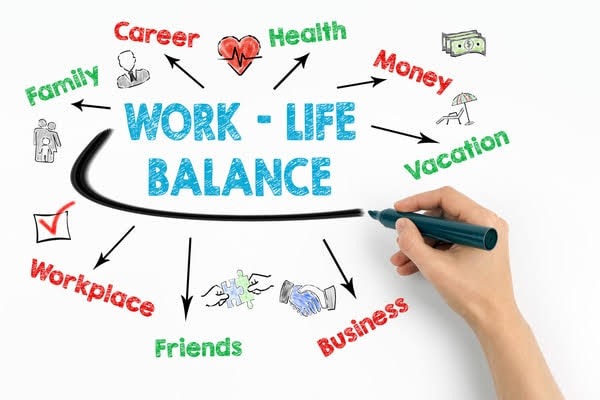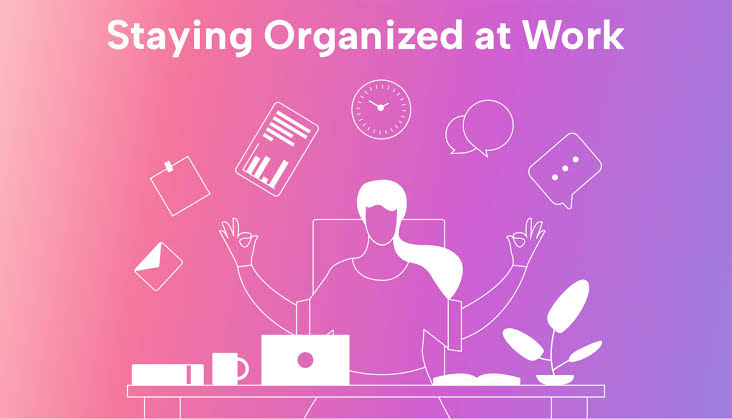Creating a healthy work-life balance is more important than ever in today’s fast-paced, connected world. Since July 2025, the mix of remote work, flexible hours, and constant availability has blurred the lines between work and personal time. While these changes offer convenience, they can also lead to overwork, burnout, and lower productivity. Finding balance means more than working less—it means using your time wisely, managing stress, and caring for your well-being at work and at home.
Understand What Work-Life Balance Really Means
Work-life balance is often misunderstood as simply working fewer hours or separating work from personal life. In reality, it’s about creating an environment where neither aspect overwhelms the other and both can coexist without constant conflict. This balance will look different for everyone depending on job demands, lifestyle, family responsibilities, and personal goals.
For some, balance may mean logging off at a set hour each day. For others, it could mean integrating work into their lifestyle in a way that feels seamless and natural. What matters most is the ability to feel fulfilled and in control across both domains. When this balance is disrupted, stress levels rise, sleep suffers, and productivity declines. Recognizing that balance is dynamic—and not a one-size-fits-all formula—is the first step toward managing it effectively.
Set Clear Boundaries Between Work and Personal Time
One of the most practical ways to achieve work-life balance is to set clear and consistent boundaries. This includes defining your work hours, creating a designated workspace (especially if working remotely), and resisting the urge to check emails or work-related messages outside your set time.
Technology can be both a help and a hindrance in this area. In 2025, many tools exist to support boundary setting—such as calendar blockers, app usage trackers, and “do not disturb” features that automatically silence work notifications after hours. Using these tools can reinforce the distinction between work mode and personal mode.
Boundaries also extend to communication. Let colleagues and clients know your availability and set expectations for response times. The more transparent you are, the less pressure you’ll feel to always be “on,” and the more respectful others will be of your time. When boundaries are respected, stress decreases, and personal time becomes more restorative.
Prioritize Tasks and Focus on What Matters Most
Not all tasks are created equal, and trying to do everything leads to burnout rather than balance. A key strategy for managing stress and improving productivity is learning how to prioritize effectively. This involves identifying the tasks that have the greatest impact and tackling them first, while delegating or delaying less critical items.
In 2025, many professionals use tools like the Eisenhower Matrix or digital planners integrated with AI to sort tasks based on urgency and importance. These systems help individuals allocate their energy more wisely and avoid wasting time on low-value activities.
Setting daily or weekly goals can also provide direction and structure. By focusing on a few key achievements rather than a long to-do list, you reduce the risk of overwhelm and maintain a sense of progress. Prioritization creates clarity, which leads to more productive workdays and more satisfying downtime.
Incorporate Regular Breaks and Physical Movement
Taking breaks is not a sign of laziness—it’s a vital part of maintaining mental clarity and physical health. Research as of mid-2025 continues to show that regular breaks throughout the day improve focus, creativity, and overall productivity. Sitting for long hours without moving increases the risk of fatigue, back pain, and even cardiovascular issues.
Whether it’s a short walk, a stretch session, or a quick breathing exercise, physical movement resets the body and mind. Employers are increasingly recognizing this and incorporating wellness breaks, standing desks, and even in-office yoga or meditation options into their culture.
Remote workers should be even more intentional about stepping away from screens. Use timers to schedule breaks, try walking meetings when possible, and avoid working through lunch. These small but consistent actions help reduce stress, prevent burnout, and keep energy levels high throughout the day.
Practice Mindfulness and Stress Management Techniques
Stress is inevitable, but how you respond to it makes all the difference. Incorporating mindfulness practices into your routine can significantly improve your ability to stay calm, focused, and resilient, especially in high-pressure environments. Mindfulness involves being fully present in the moment, observing your thoughts and feelings without judgment.
As of 2025, mindfulness apps, wearable stress monitors, and guided meditations are widely used tools for stress reduction. These practices help calm the nervous system, lower cortisol levels, and improve emotional regulation. Even a few minutes of mindful breathing or visualization can restore focus and reduce mental clutter.
Journaling is another effective method for processing stress and organizing thoughts. Writing about what’s causing tension and identifying possible solutions creates emotional clarity. When practiced consistently, these techniques promote long-term mental well-being and support a more balanced lifestyle.
Make Time for Personal Interests and Relationships
A fulfilling life outside of work is essential for long-term well-being. Engaging in hobbies, spending time with loved ones, and exploring personal passions brings joy, fuels creativity, and offers perspective beyond deadlines and emails. Unfortunately, many professionals neglect these areas in favor of career advancement, eventually leading to burnout and dissatisfaction.
To protect personal time, it’s important to schedule it with the same level of importance as meetings or deadlines. Whether it’s reading a book, taking a weekend trip, or joining a local sports league, these activities recharge your mental and emotional batteries.
Social connection is a powerful buffer against stress. In 2025, with digital communication so prevalent, it’s easier than ever to maintain relationships—but in-person interactions remain deeply valuable. Make space for meaningful conversations and shared experiences that bring laughter and comfort. Investing in your personal life strengthens your capacity to handle work-related stress with greater ease.
Evaluate and Adjust Your Balance Regularly
Achieving work-life balance isn’t a one-time task—it’s an ongoing process. Life circumstances, job demands, and personal priorities evolve, so it’s essential to regularly assess whether your current routine is still serving you. If you feel constantly drained, irritable, or disconnected, these are signs that something needs to change.
Take time each month or quarter to reflect on what’s working and what’s not. Are you meeting your goals? Are you spending enough quality time with family or on self-care? Based on your reflections, make small adjustments rather than drastic overhauls. This could mean negotiating a flexible schedule, cutting back on unnecessary commitments, or shifting your focus toward a more meaningful role.
In July 2025, many workplaces support this approach with tools like performance tracking apps, wellness check-ins, and professional development programs that prioritize balance. When individuals take ownership of their well-being, and organizations support them, both thrive.
Conclusion: Balance Is the Foundation of Sustainable Success
In the modern world, success is no longer measured solely by how many hours you work or how busy you are—it’s about how well you manage your energy, prioritize your values, and protect your well-being. A healthy work-life balance is not only achievable but essential for long-term productivity, creativity, and happiness.
By setting boundaries, managing time effectively, nurturing relationships, and practicing mindfulness, you can create a lifestyle that supports your personal and professional goals equally. As the future of work continues to evolve, those who maintain balance will be better equipped to adapt, lead, and thrive in any environment.




Interesting